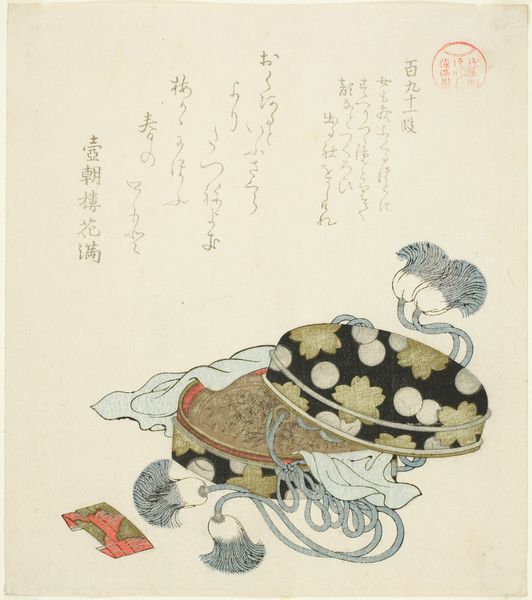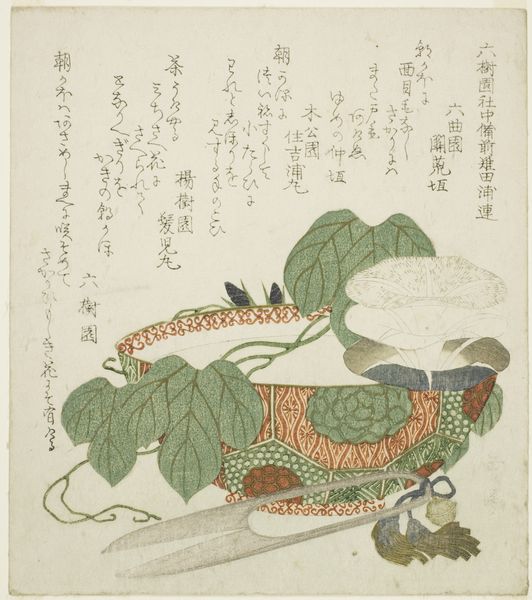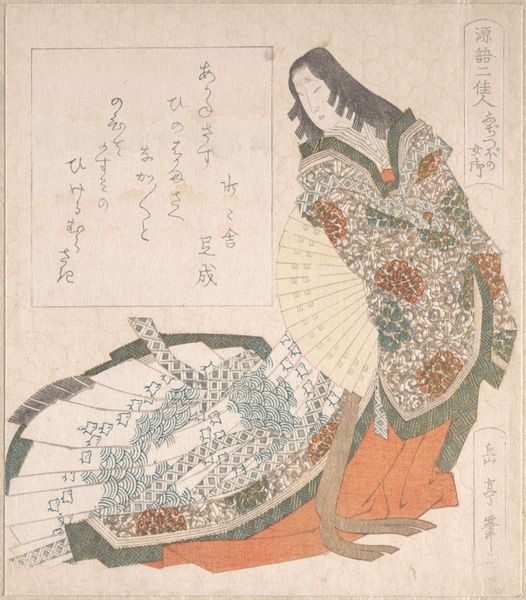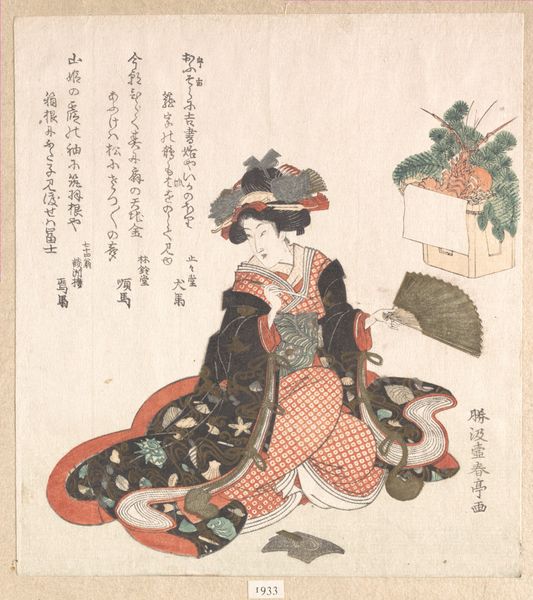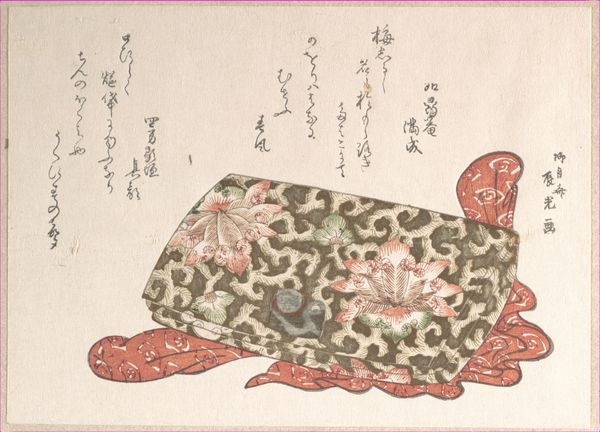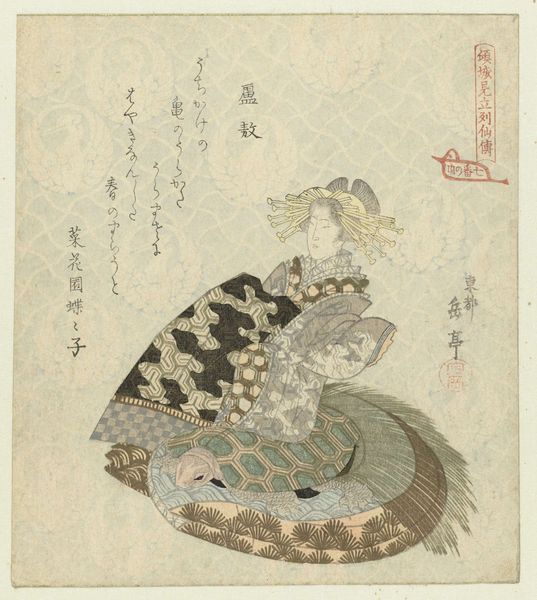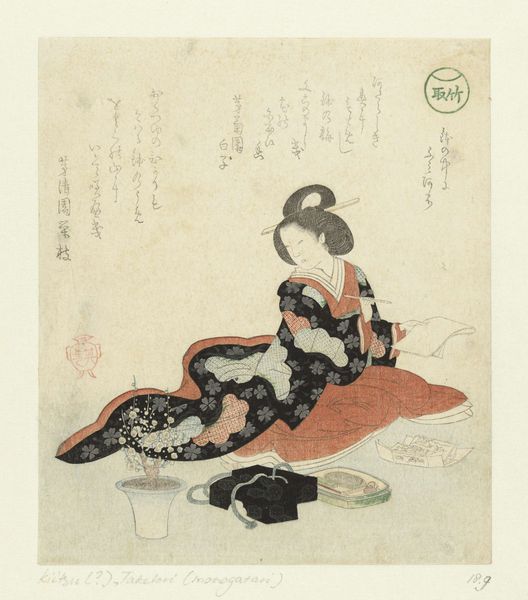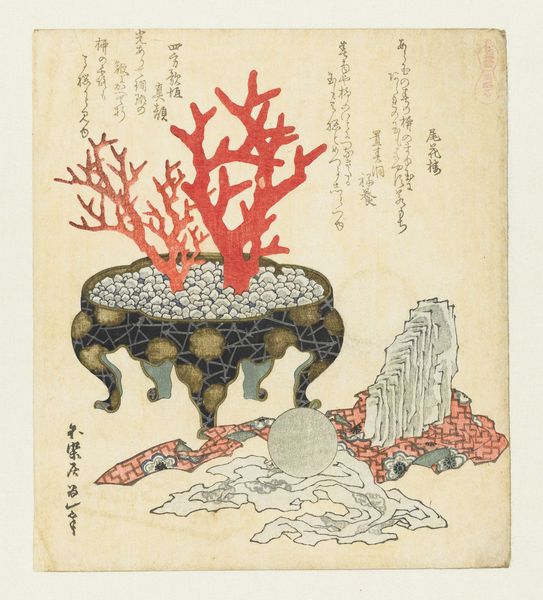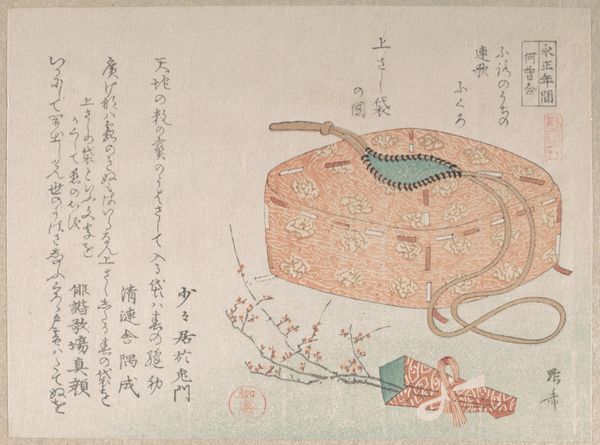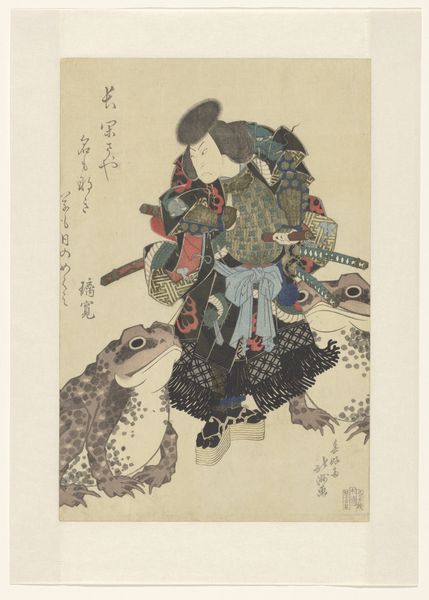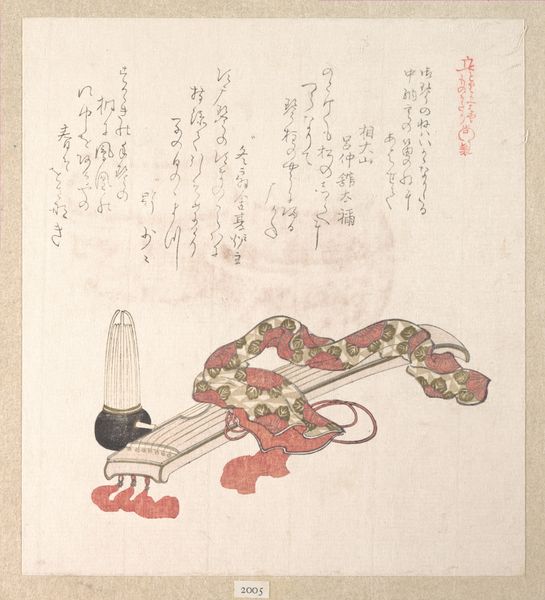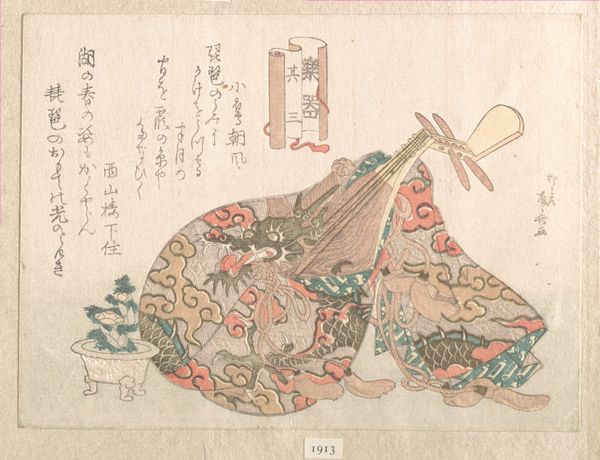
print, woodblock-print
# print
#
asian-art
#
ukiyo-e
#
woodblock-print
#
line
Dimensions: height 207 mm, width 178 mm
Copyright: Rijks Museum: Open Domain
Curator: Katsushika Hokusai, most famously known for "The Great Wave," produced this color woodblock print titled "Akoya Shell" in 1821. You can find this particular print on display at the Rijksmuseum. Editor: It's surprisingly intimate, isn't it? There's a gentle softness in the lines and a stillness, almost melancholic. The muted color palette contributes to that contemplative mood. Curator: Indeed. Let's examine the composition. Note how Hokusai arranges objects of artistic cultivation: a koto, its cover, and various tools. Observe the attention paid to the patterned textile draped across the musical instrument, juxtaposed with the sparse lines that construct the nearby container overflowing with plant life. Editor: It appears to me like a sort of curated domestic scene, the ephemera of daily life elevated through composition and exquisite printing technique. What can this type of composition reveal about the artist and the context of this image? Curator: Ukiyo-e prints were originally produced for a mass audience in Japan. In Japanese, "ukiyo" means "floating world," which reflected the impermanence of daily life. Hokusai became known for experimenting with perspective and color to reflect themes such as man’s relationship with nature and other subtle commentaries on the world around him. Consider his use of line in "Akoya Shell." The crisp delineation against negative space gives depth while drawing focus to shape, texture, and form. Editor: Given that Ukiyo-e prints were produced for wide audiences and distribution, this begs the question, what does the setting shown mean, if anything, in a social, cultural, and historical sense? Curator: At the time of its production, musical instruments such as a koto were an exclusive object, mostly owned and seen among a country's cultural elite. I speculate the message intended to be shown could have been to convey the presence and significance of music's existence amongst Japanese cultural values and national identity, given Hokusai's experimentation of nature within art. Editor: That certainly explains the subject matter of the artwork and contributes to the significance of Ukiyo-e and its historical connection within a cultural lens. Curator: A close reading truly uncovers the masterful arrangement of form and technique. Editor: Understanding the background undoubtedly allows one to discover hidden layers of meaning.
Comments
No comments
Be the first to comment and join the conversation on the ultimate creative platform.
